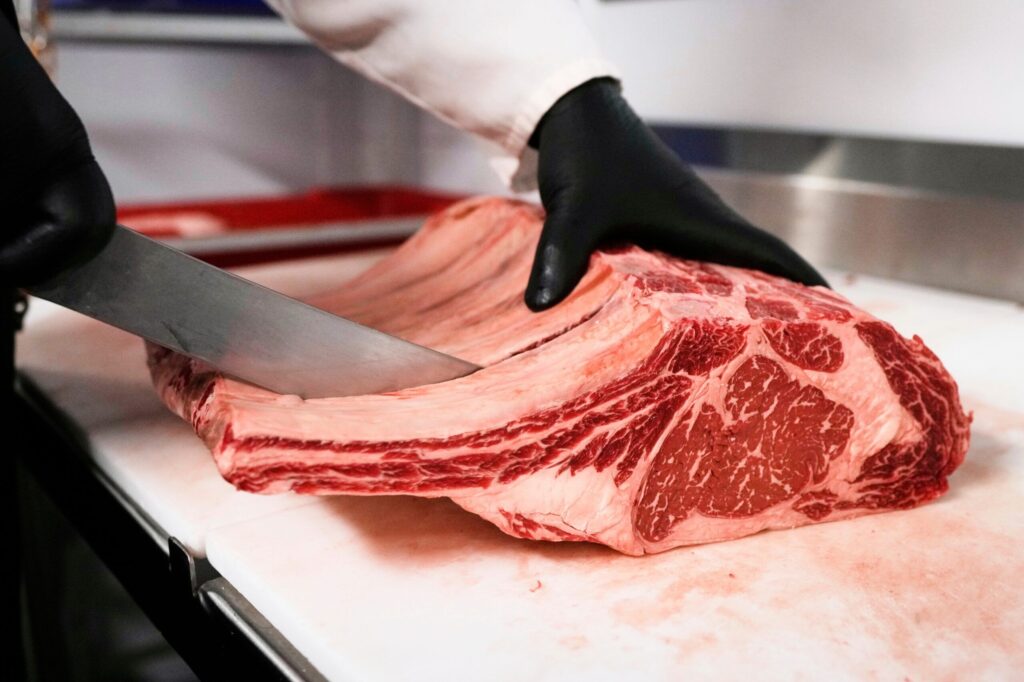Report: Colorado job growth still impressive but slowing as businesses battle hiring amid high cost of living

Job growth remains impressive, although it is slowing, and Colorado does not have enough people to fill job openings, according to a new economic report from the University of Colorado Boulder and the Colorado Secretary of State’s Office.
Secretary of State Jena Griswold on Thursday joined Richard Wobbekind, the senior economist and faculty director for the University of Colorado Boulder’s Leeds Business Research Division, and Brian Lewandowski, the division’s executive director, to discuss the quarterly business and economic indicators report for the second quarter of 2023.
New entity filings are continuing to set records, Griswold said, “surging 39.1% year-over-year and only narrowly falling from the record number of filings in Q1.” The state saw 55,000 new business entities form, she said. Griswold said reducing fees for filing to $1 likely contributed to that increase.
The four-quarter rolling sum of filings, which removes seasonality, recorded a 29.5% increase in new entities year-over-year, and an 8.2% increase from the previous quarter. More than 171,000 entities renewed in the second quarter.
The state unemployment rate of 2.8% is still below the national rate of 3.6%. Colorado’s job growth accelerated to 1.5% in June, according to the report.
“Evidence suggests that this is a signal of a supply constraint rather than easing demand,” Griswold said. “In other words, demands for workers in Colorado remain high, but Coloradans are employed, and the so called ‘Great Resignation’ appears to have slowed.”
There are many positive signs for the state, Wobbekind said. Colorado’s 4.1% job growth rate seen last year was the fastest rate of jobs added since 1997. Colorado has the largest workforce in state history and the fourth highest participation rate in the U.S., he said.
Echoing Griswold, however, Wobbekind said the state does not have the bodies to fill the jobs.
Inflation in Colorado may be improving some, but people will only move to Colorado if they can afford to, and the local cost of living is incredibly expensive, Griswold said. The number of new businesses could reflect people taking on second or third jobs to pay bills, she said.
The return of student loan payments will add another burden on residents, she said, calling interest on loans “unconscionable.”
The consumer price index in the Denver-Aurora-Lakewood region increased 5.1% year-over-year in May, compared to the national rate of 4%.
The personal finance site WalletHub.com periodically looks at which cities in the nation are seeing the biggest rise in inflation, or experiencing the “biggest inflation problems,” as the finance site puts it. Cities in Florida have seen the most dramatic change in the past year, according to an updated version of the report released this month, but Denver is now ranking first when examining both a two-month snapshot and year-over change in rates.
WalletHub relied on two metrics in its analysis, comparing the consumer price index from the most recent Bureau of Labor Statistics data (there is a one-month lag) with data from two months prior, and data from one year prior. The company looked at 23 metropolitan statistical areas.
Denver was No. 1 on this list of cities with “the biggest inflation problems,” which ranked cities using a weighted system that took into account the two-month change and the year-over change in inflation.
The Denver-Aurora-Lakewood region showed a 1.3% change in inflation from two months prior and a 4.7% change from one year ago, according to the August report. The Atlanta area came in second overall, with 1.2% and 4.6% changes in the consumer price index respectively.
While Miami and Tampa ranked the highest in terms of biggest rise inflation from one year ago, Denver ranked third, coming in before Detroit, Atlanta, Seattle, Honolulu, Washington D.C., Houston, Minneapolis and Anchorage.
U.S. inflation has been declining after it hit a 40-year high in 2022. Federal Reserve rate hikes stymied some of that rise, the WalletHub report noted, although inflation is still relatively high. The year-over-year inflation rate fell at 3.2% in July.
Still, the local experts said Colorado’s inflation rates are trending in the right direction. The 4.7% rate in July was lower than the 5.1% seen in May and 5.7% in March, they noted.
“Still elevated, but trending in the right direction,” Wobbekind said.
Lewandowski said the state’s consumer price index is higher than the national level largely because of higher price inflation for housing and transportation.
“The housing component of CPI represents 44% of the overall basket,” he said, adding the Denver area saw an 8.8% year-over-year increase, compared to 6.2% for the nation and 7.1% for the mountain region.
As for gross domestic product, the major driver of the economy, Wobbekind said it has been overperforming nationally from what was anticipated, with 2% growth in the first quarter and 2.4% in the second quarter.
“It appears that the economy is continuing to operate at a particularly good level but there are some, I don’t know, warning signs that are out there,” he said.
Consumption in the economy is slowing, he said, “something we are watching very, very carefully.” A better than expected GDP still comes with concern about future growth in regard to consumption and investment, he said.
Retail sales are slowing at a state and national level, he said – a critical discussion point for local communities that rely on sales tax revenue.
“We follow this very closely just in terms of whether or not we will avoid a recession or whether there will be a mild recession if consumption falters further than it has so far,” Wobbekind said.
On a positive note, there is national employment growth and wages are growing faster than the rate of inflation, he said. Job growth has slowed significantly in the past two years, though, and household savings have dwindled since the pandemic.
The vast majority of savings in deposit accounts is held by the top 40% of income bracket earners in the country, he said, meaning a large number of people “have nothing really to fall back on and are not going to be able to sort of continue to consume.” Delinquency rates among auto loans and credit cards have risen, and student loan repayments will resume soon, he noted.
As for investment concerns, Wobbekind said, banks are being more stringent with their credit and charging higher interest rates, creating challenges for small businesses. Larger businesses’ profits “have not been all that strong this year” either, he said.














